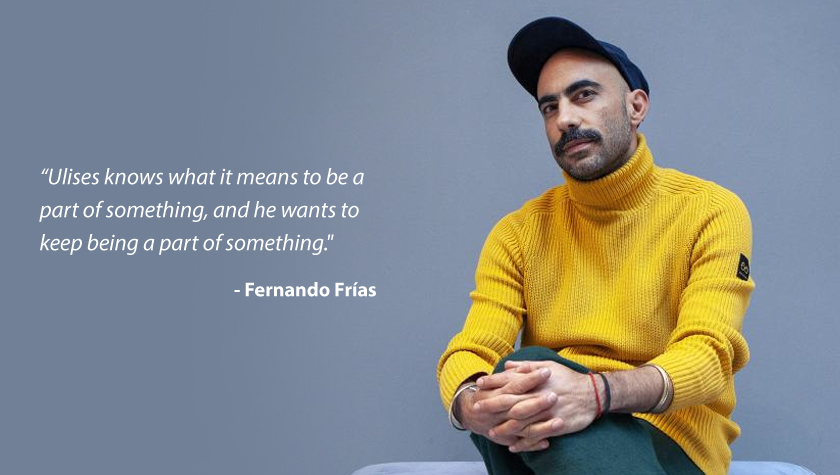5 Screenwriting Takeaways: 'Reservation Dogs' is an engrossing dramedy of long-overdue firsts
August 31, 2021
Reservation Dogs is a historic, unique and highly watchable show. It’s the first series in U.S. television history with an all-Native writers' room and a Native showrunner. It’s a genuine look at young lives lived on Native territory with the simultaneous feeling of wanting to protect territory, while also wanting to escape. Creators Sterlin Harjo and Taika Waititi have made something deeply moving. The show is funny, sad, hopeful and a sometimes difficult watch all at once. There are nods to Quentin Tarantino, but there’s also a plotline about what it feels like to be haunted by the stereotype of the Native man who sheepishly killed no one at the Battle of the Little Bighorn. Given American history, a show about Native life should be nuanced and complicated (like all life is), but now those who may have already grown up also finally have representation on screen.
Here are five screenwriting takeaways from your next binge-watch, Reservation Dogs.
1. A unique setting. The show's location is very intentional. Creator Harjo is a member of the Seminole Nation of Oklahoma and currently resides in Tulsa, which falls under the Muscogee Nation. Okmulgee is the capital of the Muscogee Nation and the home of the show’s heroes: Bear, Rita, Cheese, and Elora. “Our communities are filled with amazingly talented people,” Harjo told the New York Times. “But we are the descendants of people who survived genocide, forced removal, and displacement, so we don’t leave home as easily as others. We don’t just go to L.A. and say, ‘I’m going to be an actor.’ So you have to find those people.” Harjo also made the choice not to hold the hand of any white audience members, and to never explain an inside joke — and it serves the show well. For outsiders, the world feels captivating, engrossing, different and compelling.
3. Subversion of stereotypes. It was important to Harjo and Waititi to make sure the kids felt like kids. Waititi stressed to The New York Times: “We’re tired of seeing ourselves out there wandering through forests talking to ghosts, putting our hands on trees and talking to the wind as if we have all the answers because of our relationship with nature. And there’s always flute music. I don’t know any ghosts and I don’t talk to trees. I grew up loving comic books and being interested in girls just like the other kids.” While the Reservation Dogs do indeed feel like ordinary kids, they also feel extraordinary. The pressure to get out of their current situation feels extreme, as does the feeling that they are often left completely to their own devices. The power struggle within the group and the shift of the moral compass and leadership are also fun to watch. Coming of age while missing a dead friend and paving one’s own path is the unique struggle for a gang that wants to do right by themselves, and whose morality can feel questionable while in survival mode.
4. A sense of community. Reservation Dogs features another first. It’s the first show to shoot an entire season in Oklahoma (which has the second-largest Indigenous population after Alaska). Much of the art featured in the show was pulled from the Native community in the area at large, and often juxtaposed with pop culture film references thanks to the film tastes of Harjo and Waititi. Just as the Reservation Dogs are immersed in their own community whose sense of identity is clear (while the youngsters battle with where they fit in), the crew and the cast were immersed in local towns which saw an influx of 800 employment opportunities with the show. It took a village to make the series, and Harjo knew he wanted to return to his own to ensure the vision of the series was achieved.
Final Takeaway: Harjo told The New York Times it’s embarrassing that in 2021, it feels innovative to talk about Native representation finally portrayed with human characteristics, and it is. But, with Harjo and company paving the way, it also feels lucky that such a unique vision has made its way to the screen. To get a story that is so simultaneously hopeful and painful will hopefully make any viewer a bit better for watching.
Written by: Lindsay Stidham
Lindsay holds an MFA in screenwriting from the American Film Institute. She has overseen two scripts from script to screen as a writer/ producer. SPOONER, starring Matthew Lillard (SLAMDANCE), and DOUCHEBAG (SUNDANCE) both released theatrically. Most recently Lindsay sold PLAY NICE starring Mary Lynn Rajskub. The series was distributed on Hulu. Recent directing endeavors include the Walla Walla premiering (and best screenplay nominated) TIL DEATH DO US PART, and the music video for Bible Belt’s Tomorrow All Today. Lindsay is currently working on an interactive romcom for the production company Effin' Funny, and a feature film script for Smarty Pants Pictures. Lindsay also currently works as an Adjunct Screenwriting Faculty member at USC’s School of Cinematic Arts. You can follow her work here: https://lindsaystidham.onfabrik.com/



